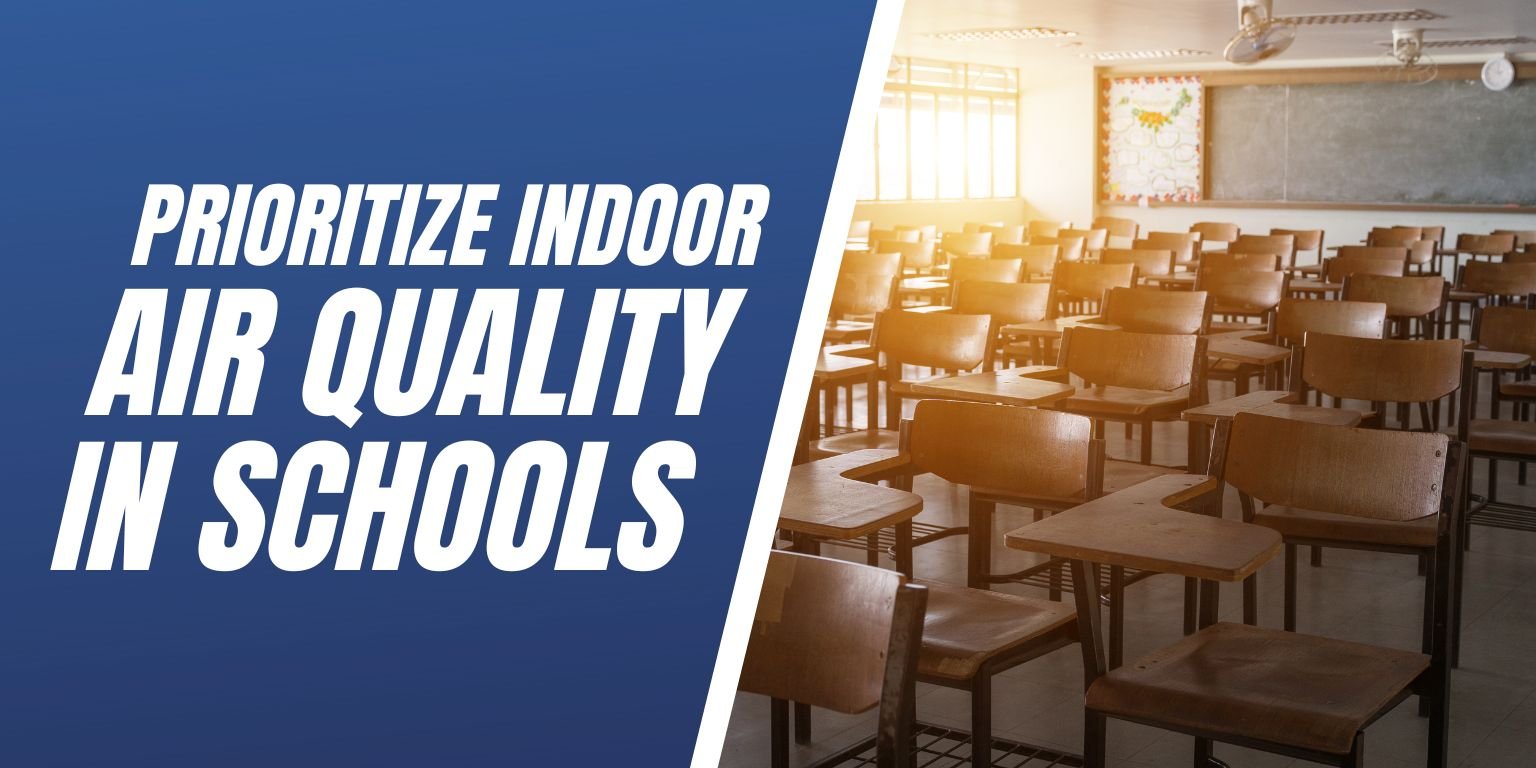
A dirty ductwork is the perfect breeding ground for mites, mold, bacteria, viruses, and other poisons that are toxic to a learning environment. Now that the cold and flu season is right around the corner, duct cleaning is an important part of keeping an environment safe and healthy for everyone that enters through your doors. So, what is the best way to keep the air your students, faculty and staff breathe clean and healthy?
HVAC System Cleaning
Cleaning your facility's ductwork is the first step in removing airborne contaminants and allergens out of the air you breathe. Regular duct cleaning also improves airflow, allowing your facility’s HVAC system to run more efficiently. According to the EPA, a buildup of just 0.42″ of dirt on a heating or cooling coil can result in a decrease of efficiency of 21%. Dirty ductwork can load filters quickly and lead to more stress on the air handler and potentially higher energy costs. Blockages in reheat coils, mixing boxes, VAV boxes and other terminal boxes found in commercial HVAC systems can also restrict airflow. Components of HVAC duct cleaning include:
- Supply & Return Ductwork
- Dedicated Exhaust Ductwork and Fans
- Air Handler Units
- Internally Lined Ductwork: Cleaning and Encapsulating (Sealing)
- Mold Remediation from all types of Ductworks
- VAV’s Reheat Coils, Mixing Boxes
- Filter Replacements
Air Purification Systems
Air Purification Systems are a helpful way to improve IAQ and combat against the spread of bacteria and viruses.
An air filter can only filter out particulate matter before it has time to spread into the air. But what's more important is what they can't filter out - viruses and bacteria.
An air purifier is an air cleaning device that captures and kills contaminants within the purifier itself. Air purifiers use one or more filtration and air treatment methods to remove pollutants from the air. Air purifiers that use HEPA filtration can filter air particles down to 0.3 microns in size with a 99.97%.
An air scrubber is an air cleaning device that utilizes a sear and retrieve method to eliminate contaminants in the indoor air. Air scrubbers are also available with HEPA filtration, allowing you to filter air particles down to 0.3 microns in size at 99.97% efficiency rating. In addition, they can work alongside a variety of three-stage HEPA negative air machines, which feature replaceable forest, second, and third filters. Air scrubbers are excellent for construction and healthcare organizations as they are highly effective at removing both airborne and settled dust and bacteria.
UVGI Light Disinfection
UVC Lighting is a disinfection method that uses short-wavelength ultraviolet light to kill or inactivate microorganisms by destroying nucleic acids and disrupting their DNA, leaving them unable to perform vital cellular functions. UVC refers to ultraviolet light with wavelengths between 200 – 280 nanometers (nm). Light in the UVC wavelength can be used for disinfecting hospitals, sterilizing surfaces, destroying harmful micro-organisms in food products and in air. So how does it work?
These specialized lamps produce an ultraviolet (UV) light that disrupts growth and deactivates existing growths, aiding in the disinfection of surfaces, water and more. Using one in your facility can help improve everything from air quality to the health and well-being of your students, faculty and staff. By treating the air circulating in your heating and cooling system, UVC lighting can kill mold and destroy airborne viruses and bacteria that, ultimately, lead to colds, flus and other illnesses. Best practices for an educational campus include:
- UVC Disinfection Wand
- Mobile Remote UVC Disinfection System
- Ceiling/Wall Mountable Germicidal UVC Systems
- Upper Air UVC
- In-duct UVGI Lighting
- UVC Lighting at the Coil
Hughes Environmental
Working with Hughes, you can expect technicians that are trained, certified and up-to-date on common best practices. We have an OSHA trainer on staff, and our technicians have been through OSHA 10- or 30-hour training. We also have Council-certified Indoor Environmentalists (CIE) and Council-certified Microbial Remediators (CMR) on staff.
From infection control for duct cleaning in hospitals to OSHA confined space training and fall protection when working from lifts, Hughes Environmental’s technicians are experienced and trained to meet your facility’s safety requirements. We’ve performed hundreds of HVAC systems cleaning projects in all kinds of facilities. We can help you breathe easier with commercial duct cleaning.
Contact Us Here or call 888-845-3952

